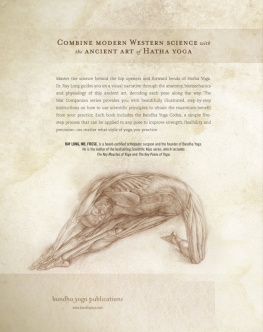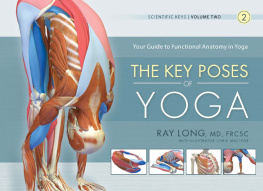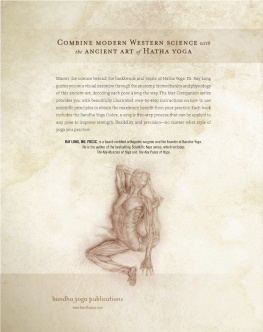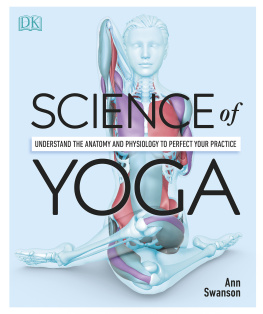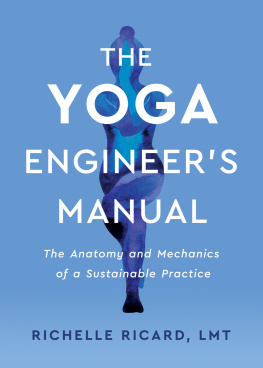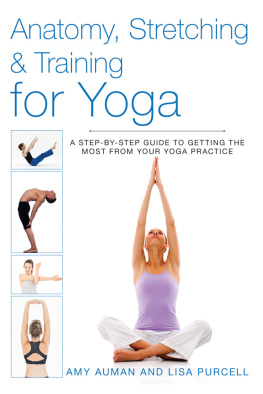
This book is intended as a reference volume only, not as a medical manual. It is not to be used in any manner for diagnosis or treatment of medical or surgical conditions. This book is also not intended to be a substitute for any treatment that may be or has been prescribed by your health care provider. If you suspect that you have a medical problem, consult your physician. Always, in your particular case, obtain medical clearance from your physician before beginning the practice of yoga or any other exercise program. Always practice yoga under the direct guidance and supervision of a qualified and experienced instructor. Working directly with a qualified yoga instructor can help to prevent injuries. The author, illustrators, editor, publisher and distributor specifically disclaim any responsibility or liability for injuries that may occur during the practice of yoga or any other exercise program.
Published by Bandha Yoga Publications
Plattsburgh, NY
www.bandhayoga.com
Copyright 2010 Raymond A. Long, MD, FRCSC All content, visual and textual, produced under the direction of Ray A. Long, MD, FRCSC
All rights reserved.
No part of this book may be reproduced, stored in a retrieval system, or transmitted by any means, electronic, mechanical, photocopying, recording, or otherwise, without written permission from the publisher.
Mat Companion is a registered trademark.
Distributed by Greenleaf Book Group LLC
For ordering information and bulk purchases, contact Bandha Yoga Publications.
Phone: 518.578.3720
Design and composition by Greenleaf Book Group LLC Cover design by Greenleaf Book Group LLC Front and back cover illustrations by Kurt Long, BFA www.kurtlong.net Computer Graphics Technical Director: Chris Macivor Sanskrit calligraphy and border painting: Stewart Thomas www.palmstone.com
Editor: Eryn Kirkwood, MA, RYT www.barrhavenyoga.com
ISBN 13: 978-1-60743-942-4

Part of the Tree Neutral program, which offsets the number of trees consumed in the production and printing of this book by taking proactive steps, such as planting trees in direct proportion to the number of trees used: www.treeneutral.com
10 11 12 13 14 15 10 9 8 7 6 5 4 3 2 1
First Edition
INTRODUCTION
As the Chinese proverb states, when you cannot reach an important goal, keep the goal but change your strategy. Yoga poses, like goals, can sometimes be difficult to achieve. What are your options when you cannot attain a posture? You can give up on progressing in the pose or you can change your approach to attain it. Changing strategies requires resourcefulness. Draw on this to break through blockages and safely attain the asanas. The Mat Companion series provides you with these resources in the form of scientific techniques.
Suppose you have tried all of the conventional means to bring your thighs to the floor in Baddha Konasana (Bound Angle Pose). Youve tried pressing the knees down or placed weights on the legs and still you havent progressed. Continued attempts will likely yield little in the way of results. So you decide to change your strategy. You can apply facilitated stretching to lengthen the muscles that are preventing you from going deeper into the pose. In the process, not only will you be able to bring the thighs closer to the floor, but you will also stimulate the nerve receptors in the pelvic region. This will illuminate the first and second chakras and aid to open energetic blockages. In addition, practicing in this way brings a better understanding of the asymmetries in your body. This understanding will carry over into other poses, expanding your overall yoga experience.
Perhaps you have lower back strain in a forward bend. The temptation might be to give up on the pose. Instead, try engaging the abdominals to create reciprocal inhibition of the stretching back muscles. Contracting the abdominals also elicits the abdominal air bag effect and supports the lumbar spine. This change in strategy is simple to apply and often works. These are examples of how to combine your knowledge of Western science with the wisdom of Hatha Yoga.
In many ways, practicing yoga is like the work of a native rainmaker who performs a ceremony to release atmospheric tension. Yoga releases physical and spiritual tension. Be resourceful and strategic as you make rain, both as a practitioner and as a teacher.
HOW TO USE THIS BOOK
Practicing yoga is like passing through a series of doors, with each door revealing new possibilities in the poses. The key to unlocking the first door is understanding the joint positions. This understanding can be used to identify the muscles that create the form of the pose and those that stretch. The key to positioning the joints is engaging the correct muscles. This begins with the prime movers. Engage the prime movers and the bones will align. The key to deepening the asanas is using your understanding of physiology to lengthen the muscles that stretch in the pose. Focus on these keys and the postures will automatically fall into place and manifest the beneficial effects of yoga. These include improved flexibility, heightened awareness, a sense of well-being, and deep relaxation.
The Mat Companion series is a set of modular books. Each book focuses on a specific pose category and contains the following:
- The Key Concepts: a description of biomechanical and physiological principles with applications for specific poses.
- The Bandha Yoga Codex: a simple five-step process that can be used to improve your flexibility, strength, and precision in the asanas.
- The Pose Section: a detailed description of the individual postures.
- Movement Index: explanations of body movement and tables listing the muscles associated with each movement.
- Anatomy Index: a visual listing of bones, ligaments, and muscles (showing the origins, insertions, and actions of each).
- Glossary of Terms
- Sanskrit Pronunciation and Pose Index
- English Pose Index

FIGURE 1 The Key Concepts show you how to apply biomechanics and physiology to your poses. Read this section first and return here often to refresh your knowledge.

FIGURE 2 The opening page for each pose illustrates the basic joint actions and positions of the body for that particular asana. Sanskrit and English names are provided for each posture. Use this page to assist you in learning the basic form of the pose and other concise details.
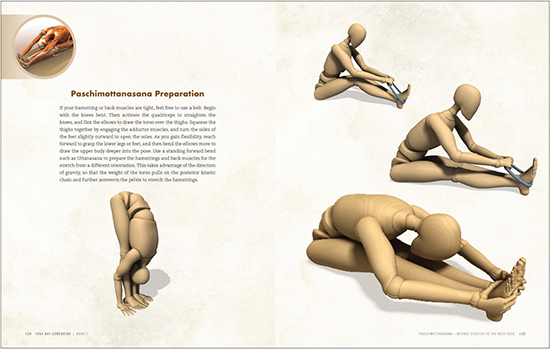
FIGURE 3 Use the preparatory section as a guide for how to enter the pose. If you are new to yoga or feel a bit stiff, use one of these modifications for your practice. In general, the preparatory poses affect the same muscle groups as the final asana. You will benefit from the pose no matter which variation you practice.
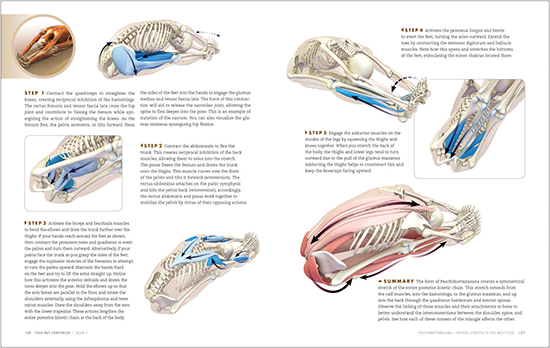
FIGURE 4 Each pose comes with a series of steps for engaging the muscles that position the joints, concluding with a summary of the muscles that stretch. Muscles that contract are colored different shades of blue (with the prime movers deep blue), and those that stretch are red. Use the pose section to master the anatomy of any given asana.
Next page
